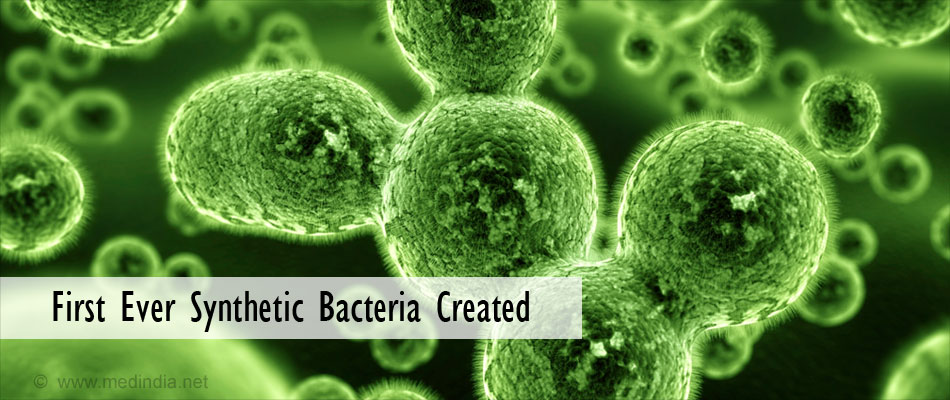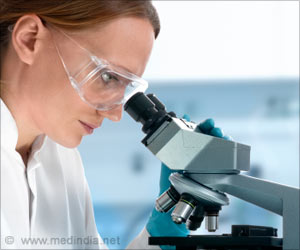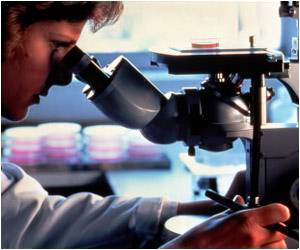
- First synthetic bacterial cell created in the laboratory.
- The 1.08 million base pairs Mycoplasma mycoides was ‘booted’ in a cell
- Synthetic bacteria made from 4 bottles of chemicals.
22 researchers led by Doctors Craig Venter, Clyde Hutchinson and Hamilton Smith have succeeded in developing synthetic bacteria in their laboratory. It took Dr Craig Venter and team 15 years to succeed in this mission. The quest for synthesizing bacteria began in 2003 when Venter and colleagues synthesized small viruses that infected cells. The oligonucleotides that were synthesized were introduced into bacteriophages and their infectivity studied. It was found that these synthesized oligonucleotides were less infectious than naturally occurring DNA, which meant that one in every 500 bp had an error. However, there was a single synthesized oligonucleotide, which had the same sequence that it was intended to have. The scientists believed that the lessons learned from this study could help them in synthesizing a bacteria.
Selecting Mycoplasmas for the Study
Mycoplasmas were selected for the study as they were capable of growing autonomously. In 1995, the scientists were successful in completing the cellular genome sequence of- Haemophilus influenza -1815 genes
- Mycoplasma genitalium- 525 genes
Dr Venter said “The only way to understand the minimal genome is to actually synthesize a genome.”
Synthesizing M. mycoides
The non-essential genes of M.mycoides were removed using whole genome design and synthesis. The original size of the genome of the organism is 1079 Kbp and M.mycoides JCVI syn 1.0 was synthesized by removing non-essential genes. It was found that this organism grew poorly, refuting claims of having only the core genome.Dr Venter thought that synthesizing a bacteria with a core genome will take a year, but it turned out to be lot more hard than he expected. It took him 4 long years and he said “Even with the sequence in hand, deciphering the operating system of the cell was a daunting task”
To remove genes that they considered non-essential, the scientists used transposons that restricted the functions of the genes. They included transposons till no more could be included and the cell continued to grow and multiply.
M.mycoides JCVI 3.0 was then synthesized after repeated testing and design. It was found to have the following properties:
- Smallest replicating organism
- The doubling time of this organism is approximately 180 minutes
- Colonies produced by M.mycoides JCVI 3.0 are morphologically similar to M.mycoides JCVI 1.0.
- It contains 531 kbp
- The number of genes is 473
- It looks polymorphic on microscopic examination.
- The functions of 149 genes of M.mycoids JCVI 3.0 are unknown.
Highlights of the Study
- The study was able to prove that there are essential genes and there are non-essential genes in a genome. Apart from these there are quasi-essential genes that the genome requires for growth and maturation but their exact role is yet to be determined.
- The core group of genes can be identified which will help understand life better.
- Evolutionary biologists can use this information to study the function of genes and how complex organisms evolved.
- This study provides a conclusive step in synthetic biology as it is the first synthetic bacteria that is found to grow under laboratory conditions.
- Synthetic bacteria that feed on plastic and other non-biodegradable waste can be created.
- Some quasi-essential genes were included as they aided in robust growth. The absence of these genes would make the growth of these cells extremely slow, delaying scientific studies. So, the genes could have been lowered in number further, theoretically.
- The M.mycoides that was synthesized in the laboratory might be unable to survive outside the lab as there could have been certain adaptive genes that were removed. With respect to removing adaptive genes and providing only the core genes, Dr Venter said “Minimum is a relative term, based on your definition of traits and functions of a cell. So if you want a cell to have [say] photosynthetic properties, there will be totally different set of genes to support those functions.”
- Design and synthesis of a minimal bacterial genome - (http://science.sciencemag.org/content/351/6280/aad6253)
- First Self-Replicating Synthetic Bacterial Cell - (http://www.jcvi.org/cms/research/projects/first-self-replicating-synthetic-bacterial-cell/overview/)













